From the moment Georgia launched its invasion against the breakaway region of South Ossetia this past August, sparking a wider war with neighboring Russia, the New York Times‘s news coverage depicted Georgia as an innocent victim of Russia’s neo-imperialist evil. In doing so, the Times engaged in the sort of media malpractice that it promised its readers wouldn’t happen again after its disastrous coverage of the lead-up to the Iraq War.
Probably no article captures how the Times took on the role of Georgia’s public-relations conduit better than correspondent Andrew Kramer’s puff piece on Georgia’s leader, Mikheil Saakashvili, “Rebuke of a President, in the Boom of Artillery,” published just four days after Georgia invaded South Ossetia.
The article glorifies Saakashvili’s alleged bravery under fire, claiming that his biggest fault was that he loved America too much, glossing over his widely criticized crackdown on opposition media and protesters; worse, Kramer claims that Saakashvili used only “soft power,” while Russia wielded “all the hard power,” in the war.
The Times stuck to its version of events for three months. It wasn’t until the November 7 front-page story, “ Georgia Claims on Russia War Called Into Question,” that the newspaper essentially retracted its earlier reporting:
Newly available accounts by independent military observers of the beginning of the war between Georgia and Russia this summer call into question the longstanding Georgian assertion that it was acting defensively against separatist and Russian aggression.
Instead, the accounts suggest that Georgia’s inexperienced military attacked the isolated separatist capital of Tskhinvali on Aug. 7 with indiscriminate artillery and rocket fire, exposing civilians, Russian peacekeepers and unarmed monitors to harm.
Indeed. What the Times really should have asked, but so far hasn’t, is this: with so many reporters on the ground during the war, why did it take three months for the paper to get to the true version of events?
I can answer at least part of that question, because I was in South Ossetia covering the war for The Nation and Radarmagazine. I saw how the Times generated articles from the Ossetian front and how its pro-Georgian slant drove its news reporting. And here is what I can tell you about the way this extremely important foreign story was framed.
Press pool photographing Georgian corpses from atop Russian APC. (Photo: Ames)
Articles don’t simply “happen” or “pass through” journalists; they are the product of people and organizations with vested interests, ego interests, ambition interests and, of course, business interests. The Georgia war, and the easy way that the New York Times fell into and actively pushed the neocon line about innocent Georgia invaded by evil Russia, is a product of deliberate decisions and resource allocations that I personally witnessed, much to my horror and frustration.
Disparate Reports
I first started to notice something wrong with the Western coverage shortly after I arrived in Vladikavkaz, the capital of North Ossetia, in Russia proper. The few Western correspondents in Ossetia were gathered around a table at the Vladikavkaz Hotel, gorging on food and beer after a long, miserable tour into South Ossetia’s ruins. The A-list Western correspondents were reporting from the Georgian side of the conflict. They all stayed in Georgia’s capital, Tblisi, in one of that city’s two Marriotts or in the Sheraton Hotel, with its fantastic amenities, food and wine–leaving the squalid, Russian/Ossetian side of the war zone to be covered by the second-stringers or just plain stringers.
That’s when our Kremlin minder, Sasha, appeared looking harassed and depressed. He asked us if he could join us for a few minutes. The correspondents grudgingly agreed.
“I don’t know what to do anymore, so I have to ask you guys honestly and openly,” Sasha said. “Look, I arranged to take everyone down to [the South Ossetian capital] Tskhinvali. I showed you all of the destruction that the Georgian forces caused to the city. I didn’t try to tell you what to think, because first it would be counterproductive, and secondly, why would I need to? It’s so obvious what happened. And yet I get back here and now I’m seeing the stories you’re filing. It’s all about the poor Georgian victims, or that imperialist Russia is invading poor Georgia. You saw it yourselves! You saw what the Georgians did.” He slouched forward over the table. “You’re going to write what you’re going to write no matter what I show you. So what’s the point? Maybe I should give up.”
Under normal circumstances, this would be a classic Russian guilt trip. But it was clear even to us, even though we weren’t positively disposed to a Russian handler, that Sasha’s frustration was real. It was as if the Kremlin was so excited that for once in Putin’s term, the Russians lucked into being on the good guys’ side of a major news story, and it made no sense that the “free Western media” (which the Kremlin takes much more seriously than its own cowed media) wouldn’t see the truth, that they’d do the Russian thing and twist reality into propaganda. What was so shameful and embarrassing to me, an American journalist whose own Moscow-based newspaper, The eXile, had just been driven out of existence by these same Kremlin bastards, is that Sasha was rightly frustrated. A Kremlin minder right and the Western journalists wrong? What has this world come to when the Kremlin has a better grasp of the truth than the free Western media?
That’s when Matt Siegel, a young Moscow expat who was hired a week earlier by the New York Times to serve as its stringer-correspondent covering the Russian/Ossetian side of the war, spoke up. Siegel complained to Sasha that the real problem was the way Sasha was trying to manage the Western reporters. Siegel charged that Sasha didn’t give us greater access to ethnic Georgian villages in South Ossetia; his Times editor wanted a story on crimes committed against ethnic Georgians, which seemed to be what all Western editors wanted. (Georgian grievances were in big demand from the Western media’s home offices. My first day in North Ossetia, I joined Tom Parfitt of the Guardian and Andrew Osborn of the Wall Street Journal, driving around ethnic Georgian villages on the Russian side of the border, chasing false rumors that we’d heard from another Western correspondent that the Georgian inhabitants there had been attacked and cleansed. All we managed to do by going into those villages was to frighten the poor villagers. Later that day, Osborn and I went to makeshift Ossetian refugee centers to check out their claims of tens of thousands of refugees; their claims checked out.)
“We don’t want to be shown the same Tskhinvali ruins again and again,” Siegel complained. “We’ve already seen them, you know? You’re not giving us anything new.”
A Brit correspondent from ITN–who, like all the TV correspondents, wore a bulletproof vest long after even their own cameramen stopped wearing them–suddenly perked up from his beer: “It’s a cover-up!” he shouted. “You’re trying to cover it up!”
The real problem was this: the editors at their desks in the home countries weren’t interested in Ossetian suffering; they wanted to exaggerate the Georgian suffering and vilify the Russians. To the second-stringers at that table, being shown the awful truth of Georgian culpability was equivalent to being handed a bunch of losing lottery tickets–because Georgian culpability and Ossetian grievances simply weren’t in demand back in New York and Washington. There was a real sense of professional anger and desperation at the table, and Sasha sensed it.
Siegel posing atop a Georgian tank in Tskhinvali. (Photo: Ames)
Surprisingly, the Kremlin tour organizer caved. The next day, Sasha arranged for the Western correspondents’ first tour into occupied Gori, traveling in from the Russian/Ossetian side rather than up from the Georgian side–this would provide fresh news. And he gave us much greater access to the ethnic Georgian villages behind Russian lines that had been torched in reprisal attacks following Georgia’s brutal invasion, which leveled buildings and villages and drove tens of thousands of Ossetian refugees into Russia. Sasha figured that it was a worthwhile trade-off: it was so important to show what he thought was the much bigger page-one story–that the Georgians lied when they claimed that Russia had bombed Gori into rubble–that it was worth conceding a story about how Ossetian and Chechen irregulars had torched Georgian homes in order to debunk the Gori-destruction propaganda that had been used so successfully to demonize Russia.
Here is what Siegel’s trip to Gori contributed to the Times article, which made no mention of how Gori was indeed almost completely unscathed:
A Times reporter traveling between Tskhinvali, which is the South Ossetian capital, and Gori saw extensive sections of [Georgian] villages that had been burned.
On the long ride down to Gori via South Ossetia, Siegel loudly and busily counted up the burned houses in ethnic Georgian villages, excitedly telling everyone, “This is what my New York Times editor wants,” running up and down the Hyundai minibus aisle. When we’d pass through Ossetian villages, he was back in his seat, on the phone loudly reporting figures into his cellphone.
When we got to Gori, we saw that it wasn’t bombed to the ground, as we’d expected. Frankly, I was shocked: after what the Russians did to Grozny during the two Chechen wars, I couldn’t believe that they wouldn’t bomb an enemy city into rubble first and ask questions later. But the fact was, compared with the ruins of Tskhinvali, Gori looked like Geneva. Siegel wasn’t interested–or, rather, his Times editor wasn’t–so he went running around looking for evidence that the Russians had dropped a cluster bomb. He thought he found that evidence–we all saw the bombshell–but apparently it wasn’t rock-solid enough for the Times editors.
Suspected Russian cluster bomb in central Gori. (Photo: Ames)
The production of the final article that appeared on page one, with Siegel’s contribution from bean-counting the burning houses, was almost entirely Georgia-centric: while temp-stringer Siegel was hired to cover the Russian/Ossetian side of the conflict zone, staffers Sabrina Tavernise, C.J. Chivers and Michael Schwirtz were stationed on the Georgian side, along with photographer-reporters Joao Silva and Justyna Mielnikiewicz, who has lived in Tblisi since 2001.
Had Siegel–or, rather, his editor–taken an interest in the really important story that we saw that day–that the Georgian propagandists had wildly exaggerated the destruction in Gori, which should have cast doubt on their entire story all along–the Times would not have had to wait until November 7 to “call into question” Georgia’s claims. The paper could have called them into question right there–or at a hundred other opportunities that I saw in my time in the conflict zone.
Apparently, the editors weren’t interested. And this is where the Times‘s reporting–from the editorial decision to base all of its staffers on the Georgian side while leaving the crucial Russian/Ossetian side of the battle zone to a stringer eager to please his US-based employer–went so woefully, recklessly wrong. In Siegel’s defense, he didn’t make the editorial decision to ignore the real Gori story. It seemed clear to me that it wasn’t his decision, but rather that of his editors, to highlight the unbombed parts of Tskhinvali when he reported from there a few days earlier:
Russian statements had likened the Georgian assault to other recent cataclysmic wars in the Caucasus, like the razing of Grozny in Chechnya. But while Tskhinvali sustained significant damage, it was not as widespread or catastrophic as the state-run Russian news media had portrayed it.
Fighting appears to have been concentrated in two neighborhoods, while buildings in the rest of the city stood intact. Entire residential neighborhoods appeared unscathed. Even in the hardest-hit areas, most buildings were left standing.
I’m still shocked today reading this. Yes, most of the buildings were standing. It’s hard to level buildings in just a few days of shelling and tank fire, no matter how fierce and indiscriminate. What the Times‘s stringer didn’t include was that the “two neighborhoods” he alluded to were Tskhinvali’s main residential district, nicknamed Shanghai because of its population density (it’s where most of the city’s high-rise apartment blocks are located), and the old Jewish Quarter, which was nothing but piles of rubble. Leaving out those powerful, significant details–and again, this looks like the fault of the editors in New York who hired Siegel–is active propaganda.
To see what I mean, here’s how a more seasoned reporter, Peter Finn of the Washington Post, reported the same scene a couple of days later, when he finally was let into Tskhinvali:
The war between Georgia and Russia was centered on this town of at most 10,000 people, and it cut a swath of destruction, severely damaging many homes and apartment buildings.
The scale of the destruction is undeniable; some streets summon iconic images of Stalingrad during World War II or Grozny, the capital of Chechnya, which was leveled in two wars between Russian and Chechen separatists.
The Jewish Quarter, Tskhinvali. (Photo: Ames)
What’s more disturbing is how the Times stuck to its false narrative about an innocent Georgia attacked by a neo-imperialist Russia long after the war ended and evidence started to pour in of Georgia’s culpability. It took whistleblowers, human rights organizations and the Western European media to reveal what happened. In mid-September, Germany’s Der Spiegel published an investigative report drawing on interviews with OSCE monitors who witnessed the war, asking, in its subhead, “Did Saakashvili Lie?”
A Myth Disproved
In late October, the BBC aired a documentary, What Really Happened in South Ossetia, that once and for all destroyed the neocon/mainstream American fairy tale about innocent, democratic Georgia: “The BBC has discovered evidence that Georgia may have committed war crimes in its attack on its breakaway region of South Ossetia in August,” the documentary reported.
The BBC used the results of its investigation to confront Britain’s foreign minister, David Miliband, with these new facts; Miliband conceded that Georgia’s behavior was “reckless,” and he vowed to confront its leadership with allegations that Georgia had deliberately targeted South Ossetian civilians with tanks and missiles.
But while the European media took its politicians to task over Georgia’s culpability, John McCain and his neocon advisers were able to set the agenda and paint the war in South Ossetia in deliberately false and alarming terms, backed by the unquestioning American media, leaving Barack Obama’s team with little choice but to fall in line with the “new cold war” fever or else risk looking like appeasers. Yet because of Team McCain’s close ties to Saakashvili, and the recent unmistakable revelations about Georgia’s guilt in launching the war, a Daily Beast reporter recently asked, “Did McCain Bury the Truth About Russia?”
Like so many other serious questions, it’s unlikely that the major American media outlets will bother answering that question.
Meanwhile, the evidence showing that Georgia was no less guilty than Russia of war crimes kept piling up: Human Rights Watch has been releasing reports condemning Georgia’s wartime violations and crimes, including indiscriminate shelling of civilians and use of illegal weapons such as cluster bombs and rockets on civilian targets; Reporters Without Borders denounced Georgia’s deteriorating press freedoms, ranking the country in the cellar with odious Third World dictatorships; and Amnesty International has issued a detailed study accusing Georgia of committing war crimes right alongside Russia, as reported in the Associated Press:
Its sweeping 69-page report cites evidence suggesting that Georgian forces indiscriminately fired on civilian targets in Tskhinvali, the capital of the Russian-backed breakaway province of South Ossetia…and violated international law on the conduct of war.
In light of all this mounting evidence that there is no black-and-white good guy/bad guy reality to square with the dominant narrative, it was only a matter of time before someone in the major American media would get around to reporting the facts.
Western reporters pose in front of occupied Gori church, as Russian occupiers agree to photograph them. (Photo: Ames)
And yet the Times clung to its narrative. On September 16, just as Der Spiegel published its exposé on Saakashvili’s lies and culpability in launching the invasion and committing war crimes, the New York Times published a front-pager, “ Georgia Offers Fresh Evidence on War’s Start,” which tried to prove yet again that Russia invaded first, unprovoked.
The evidence backing the story consisted of a cassette recording that Saakashvili’s people handed to a Times reporter a month after the war.
Why didn’t the Times question the tape? In the aforementioned BBC investigative documentary about South Ossetia, host Tim Whewell is shown listening to this same tape with a Georgian Interior Ministry official, Shota Utiashvili. But instead of buying it hook, line and sinker, as the Times did, Whewell reacted skeptically:
Whewell: “So even though this tape was so important as evidence of Russia’s actions, you actually lost it for a month?”
Utiashvili (looking embarrassed): “Well we, we hadn’t, we never lost it actually because it was, it was in the files. But we had about 6,000 intercepts at the same time.”
Whewell: “So even one so important to your case, you didn’t keep it specially, separately?”
Utiashvili: “No, no. That was a mistake.”
Utiashvili’s “the dog ate my homework” excuse for why Georgia released those tapes a month after the war made for a great television moment: the triumph of serious journalism over propaganda, the shaming of a government official caught in a bad lie. But for the BBC’s counterparts at the New York Times, that same tape, unquestioned, offered the very opposite: a chance to shore up a crumbling fairy tale that the Times had sold to its trusting readership, even though the consequence of shoring up that fairy tale was a cold war nightmare.
The Kremlin press pool Hyundai, heading back to North Ossetia late at night. (Photo: Ames)
No Apologies
Now that even the Times has reversed itself, the question is: will it do the responsible thing and apologize to its readers for its journalistic malpractice? After all, the consequences of its slanted reporting helped shape a political supra-reality that pushed us to the brink of a new cold war. Will America’s paper of record issue an apology, however feeble, as it did for the Iraq debacle? Will anyone be held accountable?
In May 2004, in the wake of its reporting on the lead-up to the Iraq War, the Times published a feeble mea culpa, “The Times and Iraq,” in which the editors sought to expose their failures:
Editors at several levels who should have been challenging reporters and pressing for more skepticism were perhaps too intent on rushing scoops into the paper….
We consider the story of Iraq’s weapons, and of the pattern of misinformation, to be unfinished business. And we fully intend to continue aggressive reporting aimed at setting the record straight.
Just four years later, the Times repeated those same mistakes in South Ossetia. The paper doesn’t seem to have learned from its journalistic malpractice debacle over Iraq. It promised its readers, and the public at large, that it would try never to make that mistake again. How many more mistakes will it take before the Times delivers on its promises?
I essentially posed this question to the Times when I asked the paper to comment on this critique of its war coverage. I received a lengthy response from Craig Whitney, standards editor for the Times and a former correspondent in the Soviet Union from 1977 to 1980. It began by accusing me of “a perverse distortion of this reporting, nothing less, to say that [the Times] portrayed Georgia as a victim of Russian aggression rather than as an aggressor.” There followed twenty-three pages of article excerpts spanning the last six months or so–revealing a record not of the Times getting the story right about Georgia’s guilt in launching the war but rather one of bet-hedging for journalists, just enough qualifiers slipped into the articles to indemnify the Times from criticism should the conventional wisdom on that war change.
“What we can do, and did, was try our best to sort it out after the shooting started,” Whitney stated. He may believe that–but if he does, it only points to how profoundly unaware major media players can be. Since I was there, I know how the Times created its false slant in this war, misleading its readers and helping create the grounds for a new cold war. It leaves me wondering how many other major stories the Times has been blowing this badly.
On December 3, the Times‘s lead editorial about Iraq asked for, in the words of its headline, “At Least Some Accountability“. It’s ironic that what the New York Times rightly asks of others it fails to deliver itself.
*****
Mark Ames is the author of Going Postal: Rage, Murder and Rebellion From Reagan’s Workplaces to Clinton’s Columbine and Beyond (Soft Skull) and The eXile: Sex, Drugs and Libel in the New Russia (Grove). But his book by clicking the cover below:
Click the cover & buy the book!
Read more: georgia, new york times, Russia, war, Mark Ames, Fatwah


Got something to say to us? Then send us a letter.
Want us to stick around? Donate to The eXiled.
Twitter twerps can follow us at twitter.com/exiledonline




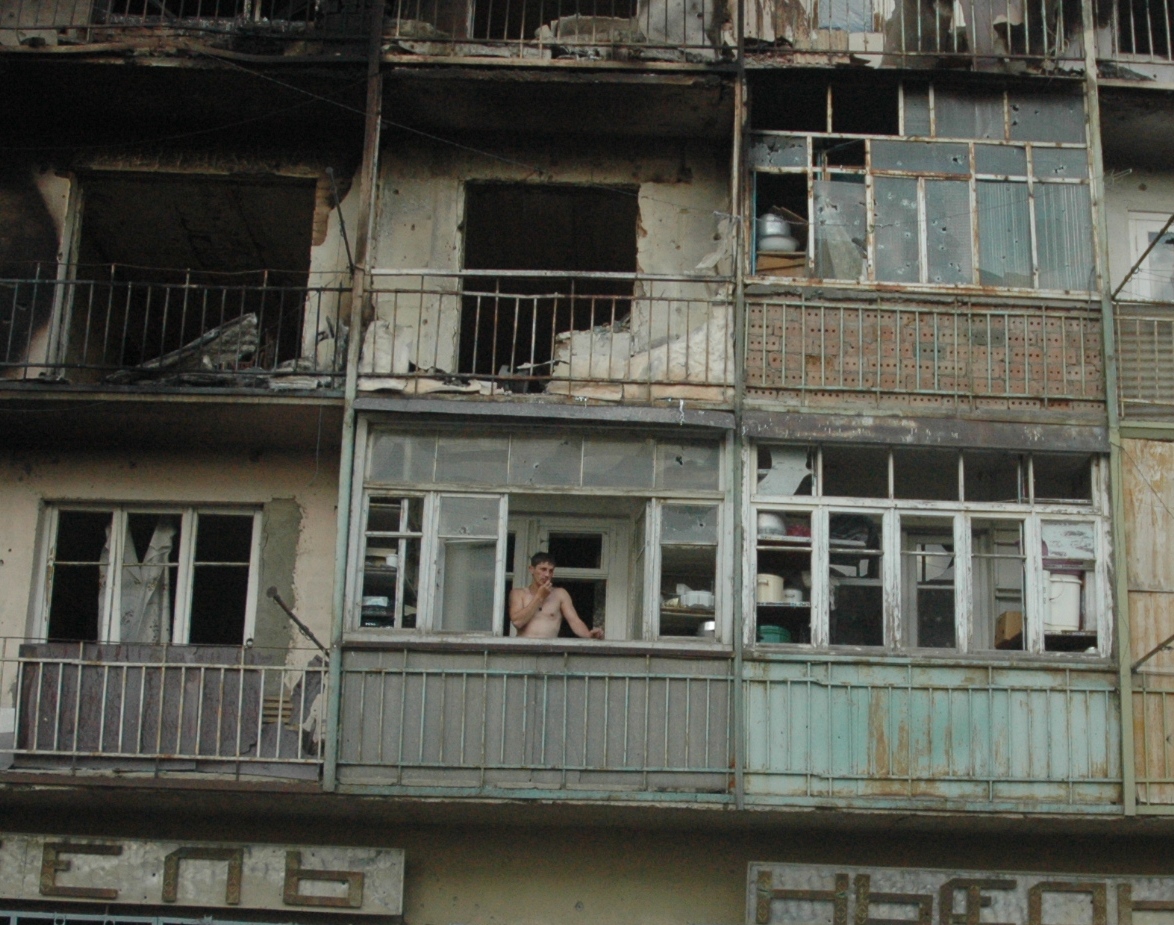
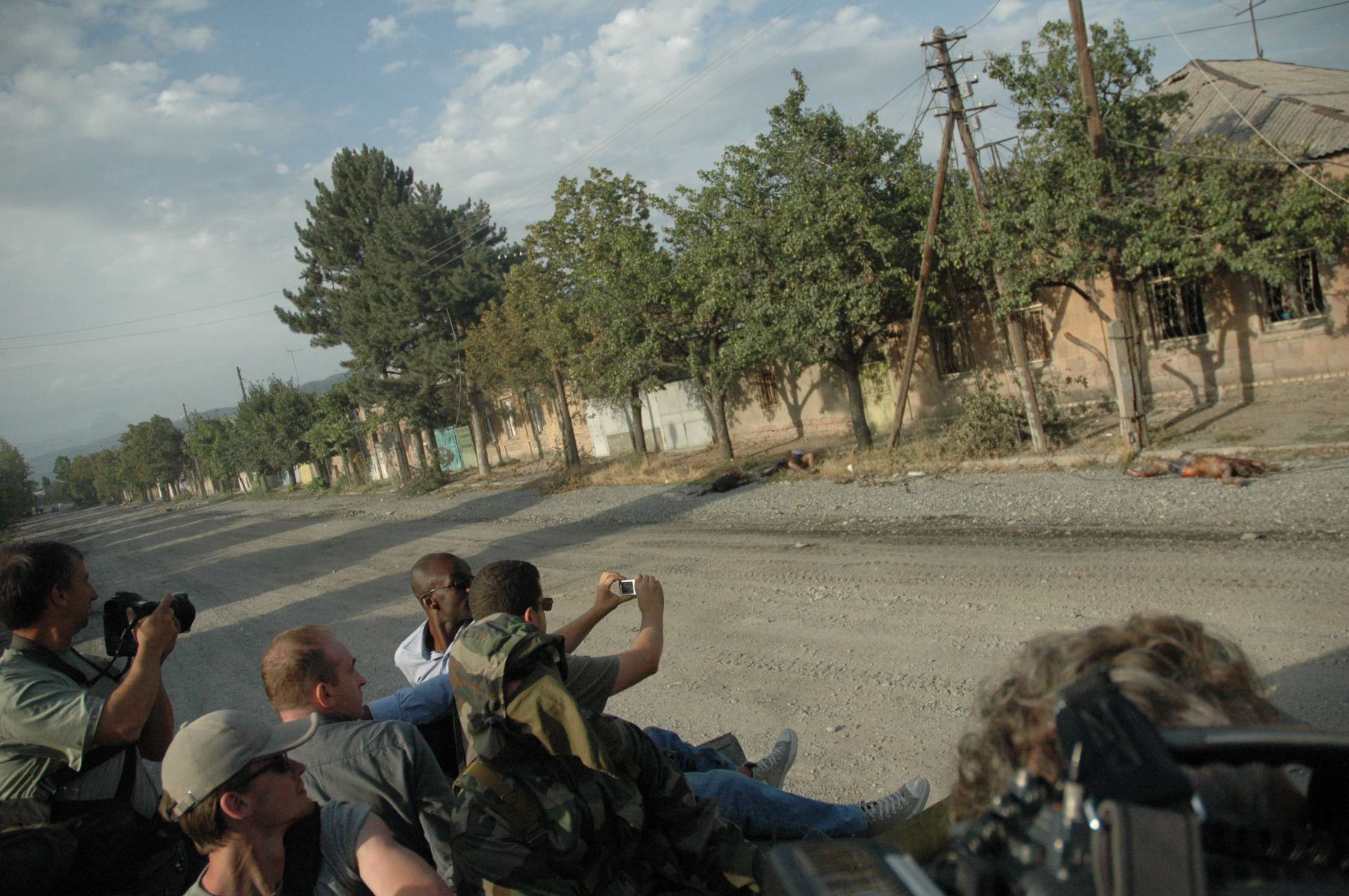
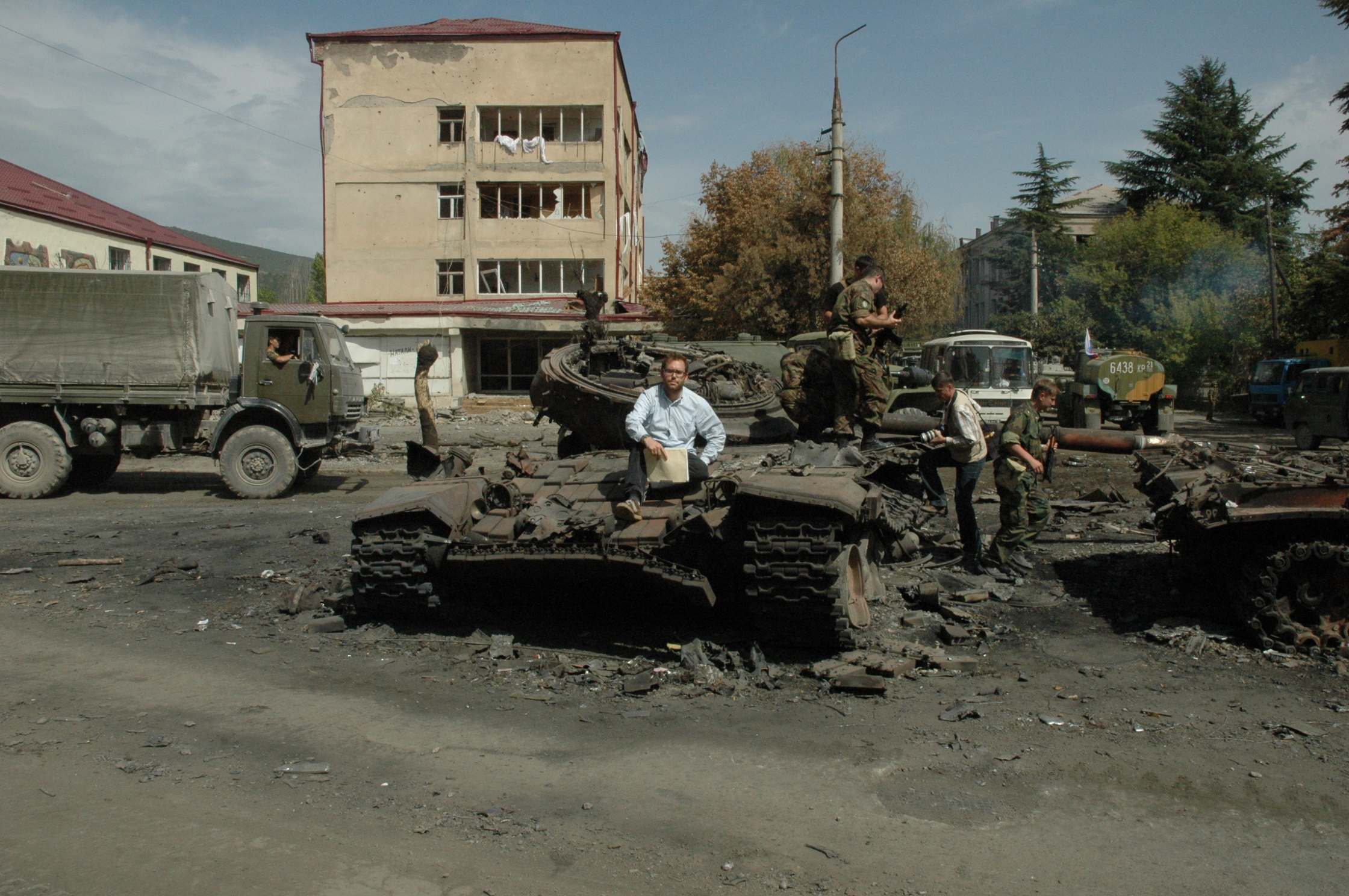

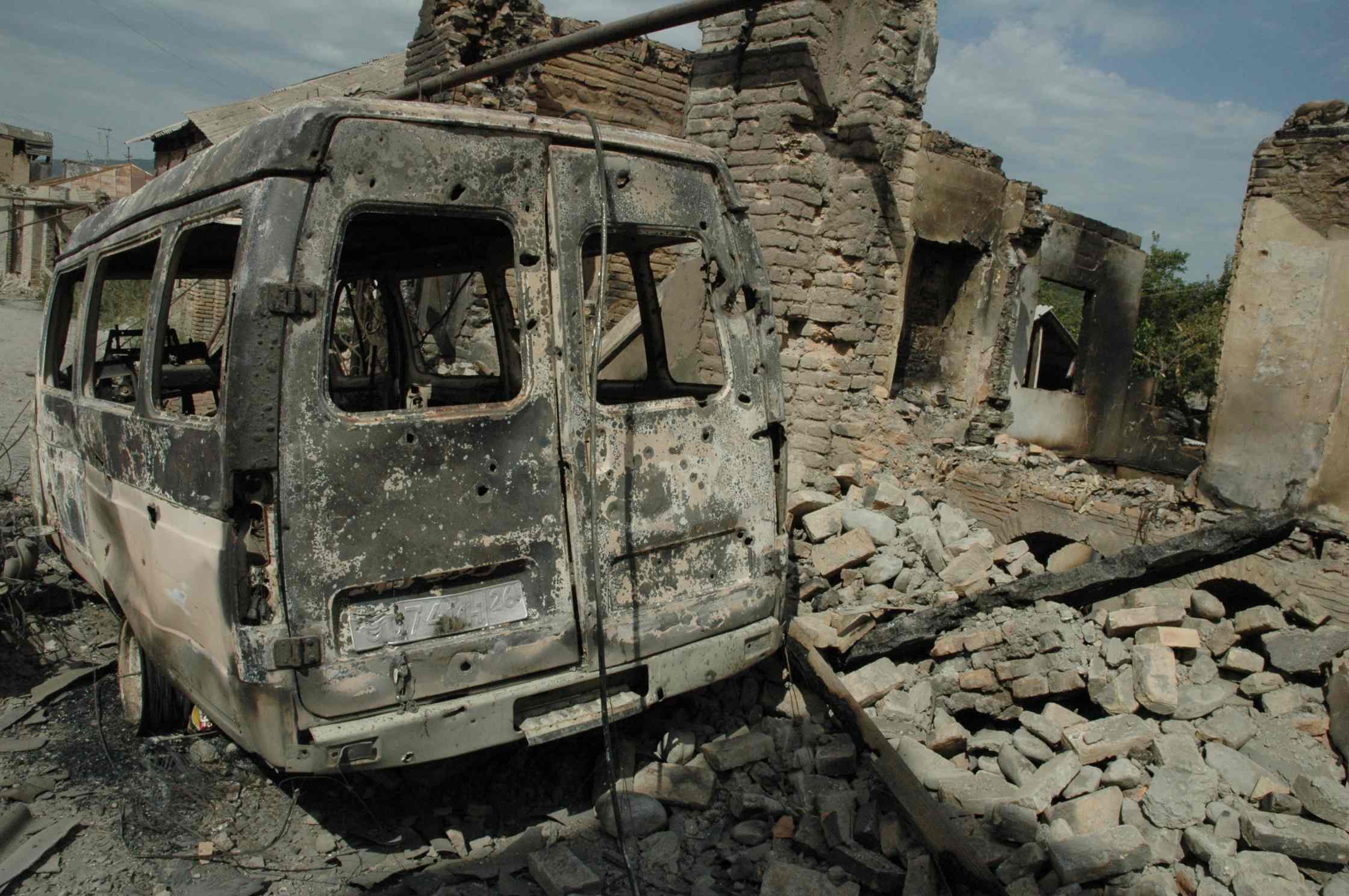
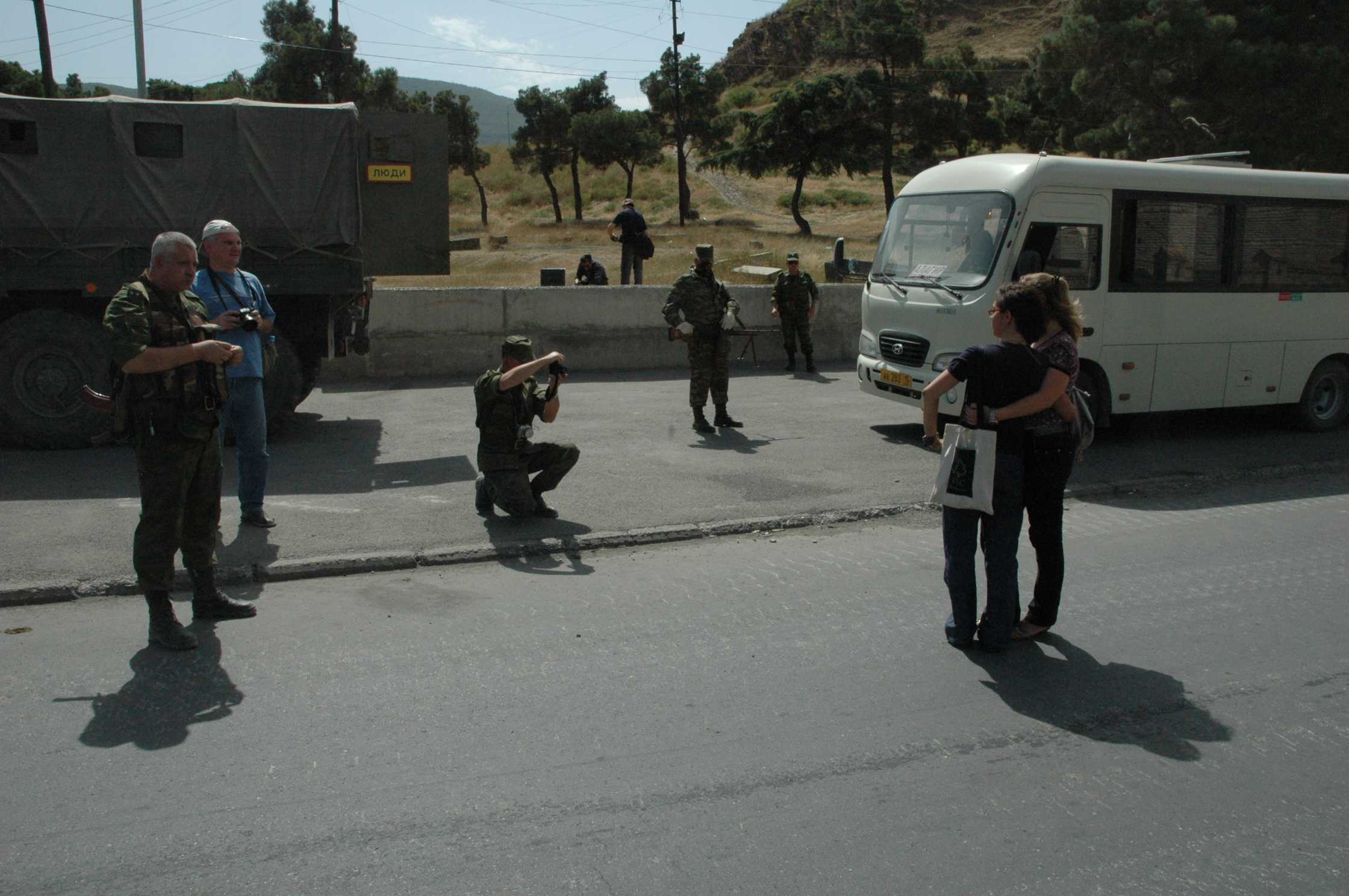
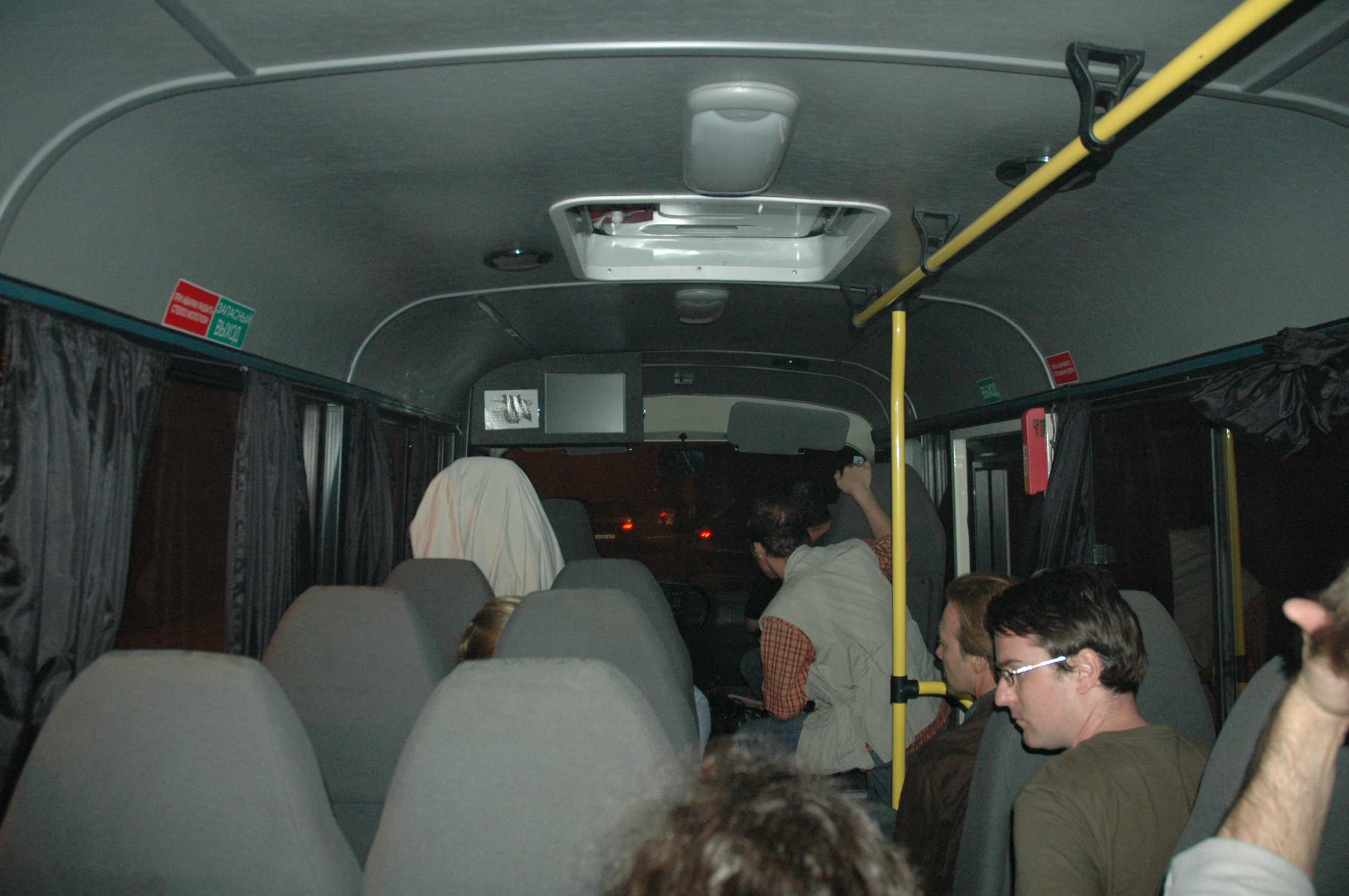
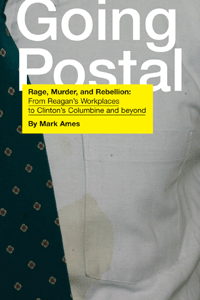

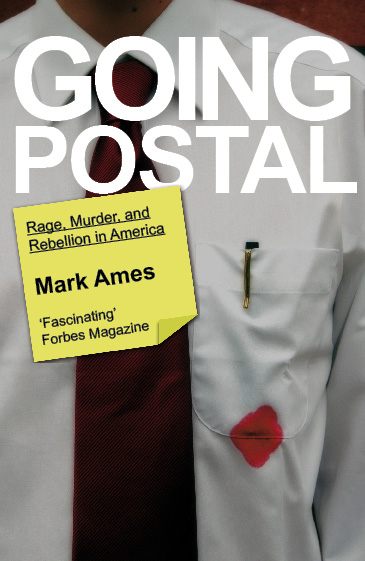

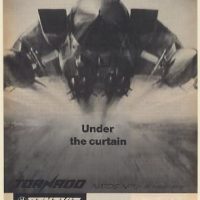
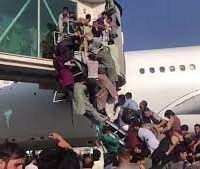


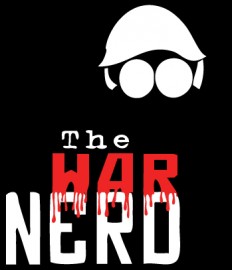
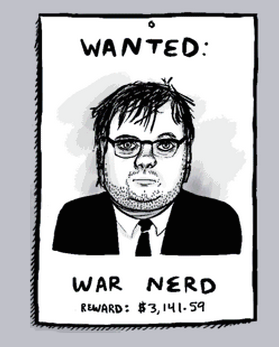


12 Comments
Add your own1. Scott Gunsaullus | December 22nd, 2008 at 9:49 am
Good story. Ames should publish another book.
2. kotek besar | December 22nd, 2008 at 10:20 am
Kudos to you New Media types for exposing Old Media lies.
3. Jay | December 22nd, 2008 at 12:05 pm
Good article!
But there are somethings I’d like to add.
First, the majority of the European media stuck to the American version of the conflict in the initial waves of the coverage.
Even more serious newspapers as the mentioned SPIEGEL took the side of the georgians, for a long time.
In fact there wasnt a single mejor newspaper who tried to write an objective article about it.
They basically just copied the American point of view.
The whole coverage of the events, struck me immediately as a deliberate act of propaganda to twist the truth in favor of a government backed by some large and powerful cooperations.
4. Rune | December 22nd, 2008 at 4:28 pm
Danish media was just as biased as the American. One of the supposedly more serious (Weekend Avisen) newspapers even went so far as to report the ridiculous story of a communist Estonian group seeking independence (http://www.kplo.ru/index.php?option=com_content&task=view&id=612&Itemid=5) as proof that Ivan was up to no good there as well. So far I have only seen one newspaper (Information: http://www.information.dk/173467) seriously try to address their obvious swallowing Georgia’s propaganda hook, line and sinker.
Should someone be interested, then I have been collection some of the more reasonable articles in English here:
2008 South Ossetia War
There is one story about Saakasjvili apparently trying to stage his own assassination attempt in late November, which I haven’t been able to find an English language article for.
5. geo8rge | December 22nd, 2008 at 8:50 pm
Didn’t you guys say you had a picture of a tank turret stuck in the side of a building? Are you every going to post it?
6. Erik B. | December 22nd, 2008 at 11:58 pm
Solid work, Ames. If you sell out, you’ll be rich.
The interesting thing is, that in the first 48 hours of the conflict, the mass media actually reported truthfully that Georgia was the instigator, but they soon did a 180 and toed the Washington line.
And now we see a slew of mea culpa articles explaining how the editors and journos got it all wrong, only they weren’t despicable cheap whores as might be suspected, only incompetent morons. These reports of miraculous epiphanies and humble pleas of insanity began to appear simultaneously world wide a month or so ago.
But we see you, fuckers! You are all on the record for telling the truth from the outset, so don’t tell us you just found out now.
7. Jay | December 23rd, 2008 at 12:53 am
This was definitely not a case of incompetence.
This was a real act of propaganda.
8. wArumbAnanekRumm | December 23rd, 2008 at 4:05 am
I like to refer back to German news from time to time to get a different incite, but funnily enough the red-head cunt (aka Angela Merkel) claimed a pleasent silence about anything to do with Georgia… you see the EU is vyeery dyependyent on roo-sha – they are so coward that they wont even take sides against the truth.
9. daikide | January 12th, 2009 at 6:21 pm
Look Mr Ames, if you are going to write about the war. You better understand what you are writing about and not just analyse what you have learned through the Russian media about Georgia/Saakashvili… Because it’s war and on the war people are dieing. This is serious.
I think you are basing your points on a very wrong things: …Americans/British are Wrong… Russians Protect … and oh yeah… It’s all that Saakashvili’s fault…
Let’s begin:
i)Russia has quitted the European arems treaty thus allowing to move it’s military at it’s own will in large numbers.(South Caucasus falls into that treaty)
ii) Putin has linked Kosovo independence and Polish millse defence with the fact that he also has some things “cooking up” (He stated “U nas toje est svoi zagotovki”) In January as I remember.
iii) NATO – MAP thingy in Bucharest – April 2008. NATO stated that the MAP issue will be revisited in December 2008… so this gave Kremlin few month window to ACT!
“From the moment Georgia launched its invasion against the breakaway region of South Ossetia this past August”
– Indeed THAT is the REGION INSIDE GEORGIA. In fact the name “South Ossetia” is also inaccurate… The regions original name is “Samachablo” in 1921 Russian red army invaded Georgia in 1922 the name of Georgian region “Samachablo” was changed into “South Ossetia” on the other side of the Caucasian mountains the “Republic Alaniya” was RENAMED to “NORTH OSSETIA”. THE REGION WAS CREATED ARTIFICIALLY! IN FACT UP TO 4x TIMES MORE OSSETIANS LIVE IN OTHER PARTS OF GEORGIA OTHER THAN SOUTH OSSETIA! (Why Georgians don’t kill any Ossetians there? Simple – No Russian military, no criminal’s like Kokoity, no grater interests; regular people have nothing to fight, they are just neighbours.)
“sparking a wider war with neighboring Russia”
– NO, IT WAS NOT SPARKING anything… Russia wanted this region as Abkhazia, it DOES NOT care about Ossetians. They want a military base in that region and they want another military base in Abkhazia as well as a sea resort!
Besides RUSSIAN MILITARY WAS THERE SINCE THE END OF JUNE! NEAR GEORGIAN BORDER AND NOONE IN RUSSIA OR RUSSIAN MEDIA MADE A BIG SECRET FROM ALL THAT.
KAVKAZ 2008 – Military exercises that Russia held ended just few days before the war;
Russia has sent IN VIOLATION OF ALL AGREEMENTS A 200 Strong team of RAILWAY MILITARY ENGINEERS TO ABKHAZIA A MONTH BEFORE THE WAR. They have repaired the route for the heavy armor transportation.
The last straw which SPARKED THE CONFLICT WAS:
1) Russians started evacuating civilian population from the region.
2) The Region became even more flooded by mercenary’s from North Caucasus/ Chechen’s/ Ingushetian paramilitary and Cossacks as well as a larger number of Russian FSB and GRU forces.
3) Georgian villages were permanently under attack, during the last days of July and the beginning of June the Georgian side had daily casualties among civilians and peacekeepers.
“the Times engaged in the sort of media malpractice that it promised its readers wouldn’t happen again after its disastrous coverage of the lead-up to the Iraq War. “
– If you want to be a serious journalist try to keep your personal emotions about war in Iraq at bey ok? This was a very different war. A war for land and there was a genocide during this war.
Well you will start to argue who is the victim, it’s tell you simply:
ETHNIC CLEANSING: (!!!!!!!!!!!!!!!!!!!!!!!!!)
Who is a war criminal:
Before 1993 – over 85% of the population in Abkhazia were ethnic Georgians!
Before 1994 – over 92% of population in South Ossetia were ethnic Georgians!
After brutal ethnic cleansing by Russian military, Chechens (including Shamil Basaev), north Caucasian criminals and Cossacks the population
Has be reduced to 4% and 35% respectively.
After last August 2008 Russian invasion the ethnic Georgian population has been reduced to 0% in both Georgian regions.
GEORGIA HAS OVER 350.000 REFUGEES FROM ABKHAZIA AND OVER 200.000 REFUGEES FROM SOUTH OSSETIA.
//
Also you were writing that there was no serious reporting from the “Ossetian side”… FIRST of all There IS NO such side. THERE ARE ONLY TWO SIDES in this war! RUSSIA – GEORGIA.
Secondly – RUSSIA DID NOT ALLOW ANY FOREIGN JOURNALISTS INTO THE CONFLICT ZONE WITHOUT THE ACCREDITATION FROM THE RUSSIAN MOF. How did you expect the journalists to get that accreditation when they were IN GEORGIA and you need to be in Moscow to get that shit… ?
Here’s pretty much everything you need to know:
http://www.ireport.com/docs/DOC-65820
////////////////////////
“Newly available accounts by independent military observers of the beginning of the war between Georgia and Russia this summer call into question the longstanding Georgian assertion that it was acting defensively against separatist and Russian aggression.”
– Firstly that was a statement by a FORMER OSCE monitor who did NOT had any right to make such statements – This are not my words but words of his supervisor WHO WAS in Tskinvali during a war.
Secondly the Georgian government has released the video footage that was showing how that British was interacting with the Russian special services in the “Tskinvali KGB HQ” (do some research, I can’t feed you everything…)
“You saw what the Georgians did.” He slouched forward over the table. “You’re going to write what you’re going to write no matter what I show you. So what’s the point? Maybe I should give up.”
– Oh Peace! Russia has stated 2100 dead within few hours and was screaming word GENOCIDE… but what did the investigation prove later? Russians have THEMSELVES stated that the death toll was about 160 people. NOW imagine the death toll if there were no AK47’s in every on those Ossetians or Russian/Chechen/north Caucasians hands?
Secondly I think that that number is too few times bigger than the actual number. It is near 40-50 as I know by my own Ossetian channels.
“Siegel charged that Sasha didn’t give us greater access to ethnic Georgian villages in South Ossetia”
– You do KNOW what happened to them right? RUSSIANS HAVE LOOTED/BURNED AND RAISED THE HOUSES TO THE GROUND WITH BULLDOZERS!
“his Times editor wanted a story on crimes committed against ethnic Georgians, which seemed to be what all Western editors wanted.”
– You know why? Because if they even tried to go to Tskinvali the “brave” Russian “peacekeepers” were shooting at them. A Danish journalist was killed. 2 Georgian Journalists and 2 Turkish got nearly killed. One Georgian women Journalist got lightly shot in the hand while being LIVE on TV… IT WAS MUCH SAFER for them to just cover the Georgian side then to go to Russian military and try to cover that. Understood?
“Georgian grievances were in big demand from the Western media’s home offices.”
– Pathetic sarcasm.
“My first day in North Ossetia, I joined Tom Parfitt of the Guardian and Andrew Osborn of the Wall Street Journal, driving around ethnic Georgian villages on the Russian side of the border, chasing false rumors that we’d heard from another Western correspondent that the Georgian inhabitants there had been attacked and cleansed.”
“ All we managed to do by going into those villages was to frighten the poor villagers. Later that day, Osborn and I went to makeshift Ossetian refugee centers to check out their claims of tens of thousands of refugees; their claims checked out.)”
– TAMARASHENI – GOT COMPLETELY RAISED TO THE GROUND, NIKOZI, ERGNETI, NULI ARE GONE! ALL THIS HAPPENED AFTER THE ACTIVE PHASE OF WAR ENDED. RUSSIANS DID IT BY THE ORDERS OF THE KREMLIN. GO AND TRY TO SEE THOSE VILLAGES NOW, IF YOU CAN…
http://georgiandaily.com/repository/UNOSAT-%20GEO%20-%20Tskhinvali-Damage%208-19-08.pdf
I think I’m waisting my time on you…
The fact that you have been with Russians, does not necessarily mean that what you saw was the right side.
“The Jewish Quarter, Tskhinvali. (Photo: Ames)”
– How many Jews live in the Jewish Quarter in Tskinvali??? After 1960s their number is 0! (ZERO!) Russians remembered that name just recently and focused their propaganda on that too. I can see you are clearly joining them here without even trying to analyse anything.
– In fact Georgian defence minister(Kezerashvili) as the minister of reintegration(Yakobashvili) are Georgian Jews.
And WHO are the “ministers” in Tskinvali? Minister of defence – Russian general of Russian armed forces; Minister of “KGB”(Yes, they call it KGB, even today) – Russian former FSB major… ALL of those guys are ethnic Russians that have NEVER lived in that region, that CAME from Russia and have absolutely NOTHING to do with Georgia or Ossetians.
Russia got what it wanted – Military bases in the center of Georgia in Tskinvali; Military bases in Abkhazia and a new sea resort in Suxumi.
Georgia got even more of refugees within it’s country, the territory’s are now officially annexed and occupied, NATO integration has slowed down.
The only thing that Russian did not manage to do was a “regime change” as Vitalii Churkin has put it in the UN…
I respect your magazine and I understand what are it’s aims, but this is a wrong side you are standing on. No country is allowed to march across the internationally recognised parts of neighbouring country and annex the neighbours territory. I understand Russians have shown you things, but they are good. They are MUCH better than you and many western journalists can imagine and you, you are just arrogant and know next to a very little about Georgia, Ossetians or maybe even Russia.
You do speak Russian right?
– there – A vobshem vot ono vsio:
http://www.youtube.com/watch?v=Bm745nPZm5I
http://www.youtube.com/watch?v=I5MeUPAyJyU
http://www.youtube.com/watch?v=MyRvj2-Oano
Vot pro voinu v Abxazii (v 1993)Govorit Russkii soldat: http://www.ireport.com/docs/DOC-152958
A vot Gruzinskii dok. vilm o tom chto predshetvovalo voine http://olegpanfilov2.livejournal.com/303463.html
10. tzameti | April 15th, 2010 at 7:33 am
i was going to write something critical but then i realized i’d be just another case of a pathetic russophobe who can’t handle the truth, like daikide.
11. Crack Smoka | September 14th, 2010 at 11:30 pm
Great article, suped up my faith in humanity. Even riled up Mikheil Saakashvili himself (daikide).
12. Fool | August 27th, 2016 at 8:21 pm
Arrived here from the great Radio War Nerd episode on the war; want to take Saakashvili’s comment (#9) behind the middle school bleachers and get it pregnant.
Leave a Comment
(Open to all. Comments can and will be censored at whim and without warning.)
Subscribe to the comments via RSS Feed